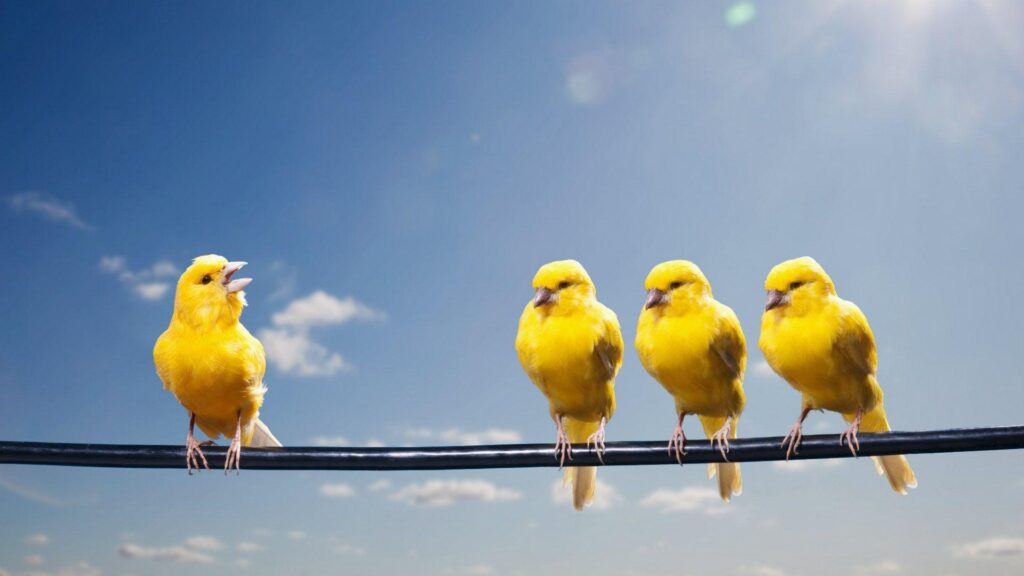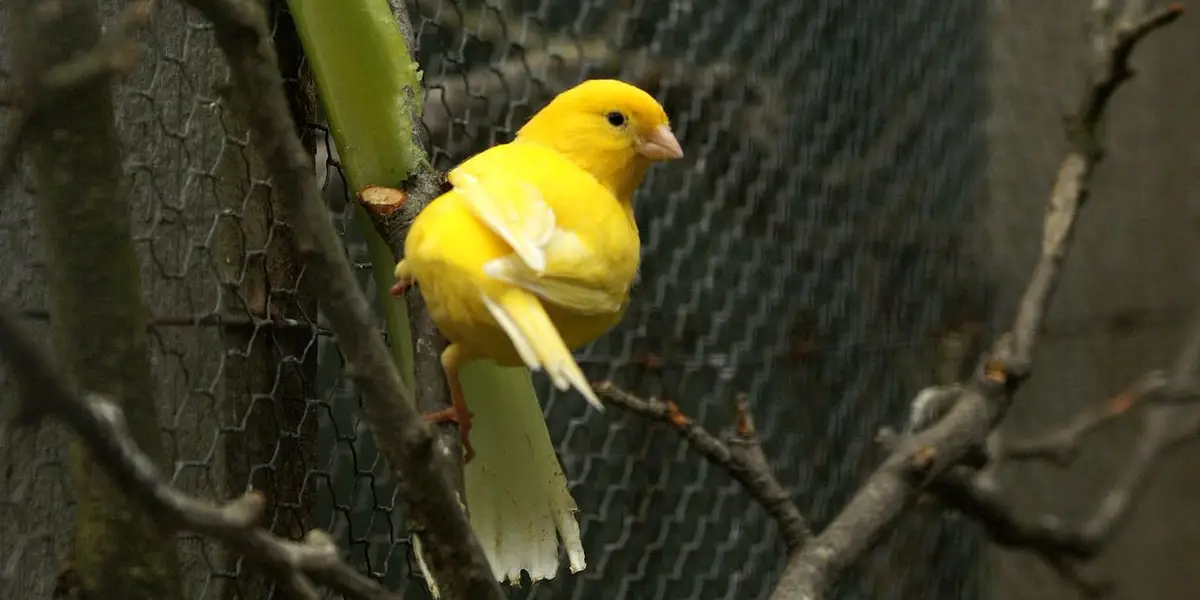The canary is a popular bird species that can be kept indoors or outdoors in an aviary. The bird is valued for its singing qualities, color, and shape. A canary prefers to live together with its congeners or with other bird species.
The care consists of providing good nutrition and fresh drinking water, cleaning the housing, and, if necessary, cleaning the house. clipping the nails. With proper care, the canary can live up to eight to twelve years. A canary gets used to its caretaker, but usually does not become as tame as a parakeet.
Reading suggestions; 7 Best Hummingbird Feeders You Need in 2021
Adopt A Canary
It is best to buy a canary from a breeder who is well known and who pays attention to the bird’s health. A healthy canary has:
- Clear eyes that don’t tear
- Calm breathing
- A soft pink skin tone and smooth, shiny feathers
- No feather mites or louse
- No droppings on his abdomen
Canary is a Social Animals
A canary is a social animal and prefers to live together with other (small) bird species. When purchasing, opt for a young canary that is molting. (August, September) The molt costs a bird a lot of energy and it is not at its best right now. During this period it also becomes clear whether the bird is in good health and whether it is getting a nice plumage.

Getting Used To The New Living Environment
A canary needs some time to get used to its new living environment. This can take a few days. Males do not whistle for the first few days either, but with good health and a well-placed cage, the bird will soon feel at ease.
Canary Housing
A canary feels comfortable in a spacious cage or aviary. The outdoor stay must be free of drafts and frost. In the house, the cage should not be near the stove, the heating, or in front of the window. It quickly gets too hot, which means there is a risk of overheating.
They also cannot withstand drafts and cooking fumes. The canaries benefit from a natural day and night rhythm. You can ensure this by hanging a cloth over the cage in the evening. A canary cannot tolerate artificial light and needs eleven hours of light a day.
This way you can prevent the canary from molting and stopping singing. Birds that have to breed do need more daylight. Then you can extend the days to fourteen or fifteen hours per day.
Canary Bird Care
Hang or set the cage high. The canaries like a clean, safe environment. You attach several perches in the cage or aviary. Because canaries like to bathe, put a bath in the cage at least two to three times a week. For the bottom, use a moisture-absorbing material that is dust-free and safe for the bird if it eats it. Also, bacteria and fungi should not have a chance to develop.
Suitable Ground Covers
- Basic micro – A natural product, which is made from pieces of corn cob. It is biodegradable, safe for animals, and has a great absorbing capacity. The material gives off little dust.
- Grids – The canaries can also live on a solid mesh bottom. This allows the droppings to fall so that the soil remains dry. The grids must be cleaned regularly.
- Cat Litter – The granules are highly absorbent, emit a neutral odor, and are safe for birds. They sometimes spread a lot of dust.
Less Suitable Ground Covers
- River sand/shell sand – The sand absorbs little or no moisture. This gives germs the chance to develop.
- Wood shavings – The shavings absorb moisture well, but mold can develop.
Reading Suggestions; 900+ Best Bird Names for Budgies, Parrots, Cockatoos, and More
Canary Housing
A birdcage must have at least two perches. Birds in an aviary need multiple perches. To do this, take sticks of different thicknesses, which you attach vertically and horizontally. The perch should be so thick that the bird’s toes can almost go around it.
The canary makes movements on the perch that strengthen its muscles and wear down the nails. This prevents the nails from having to be trimmed. Plastic perches from the store are less suitable than natural perches.
Bathing
The canary likes to bathe regularly. Place a bath of fresh water in the cage or aviary and remove it immediately after the bird has bathed. In any case, remove the bath before evening, so that the canary has enough time to dry up.
Cleaning
The birdhouse should be cleaned well weekly. To do this, take warm water and immediately change the bedding. Also clean the food bowls, birdbaths, and perches with warm water. The water bowl should be cleaned every day.
The Diet – What Does A Canary Eat?
A canary eats seed mixtures, egg food, vegetables, fruit, and treats. They use their beaks to peel seeds. The casings remain in the tray. Do not give the canary more food than it eats daily, up to about 30 percent of its body weight. He then gets all the nutrients and does not just eat the seed he likes.
In order to digest the seed, the canary needs grit. These are small stones that grind the food in the stomach. The canaries also need lime. This is in grit or sepia. An iodine block provides the bird with the necessary minerals.
Egg Food
Egg food contains many animal proteins, vitamins, and minerals, which are necessary for the health of the canary. Egg food is an important energy supplier. The canaries need egg food 3-4 times a week in addition to the seed mixture. In molting and breeding birds, about a quarter of the food may consist of egg food,
Vegetables And Fruit
The canaries love fresh fruits and vegetables such as celery, spinach, endive, kiwi, apple, and redcurrants. Avocados are poisonous to birds, so don’t give this! A small amount of fresh food every day is sufficient. Too much fresh food can cause diarrhea.
Treats
Every now and then you can spoil the canary with something tasty. The canaries love spray millet or canary sweets. These candies consist of seeds with a layer of honey on top.
Blue Canary Bird
White Canary Bird
Red Canary Bird
Yellow Canary Bird Facts













